Finding storage space is one of the main challenges that people face when planning and designing their living spaces. Sometimes, even a large room can’t accommodate another bulky wardrobe, but what do you do if you need to store a collection of figurines or a dozen books? The solution in such a situation is wall shelves, which we will talk about today.
Types of shelves
Wall shelves, although a type of shelf, can also vary in their location. They are conventionally divided into the following types:
Classic wall shelves
Attaching shelves to a flat wall is the easiest and most common option. Their simplicity sparks a wide scope for creativity: shelves can have various geometric shapes and sizes, arranged in cell-like structures or forming intricate compositions.
You can attach a single board to the wall or design structures that mimic a tree silhouette, with each “branch” serving as storage space. You may see sloping or asymmetrical bookshelves. Among the plethora of unique ideas, you’ll even find circular shelves. But when dealing with unusual shapes, you must plan every aspect in advance: positioning, filling, and support points.
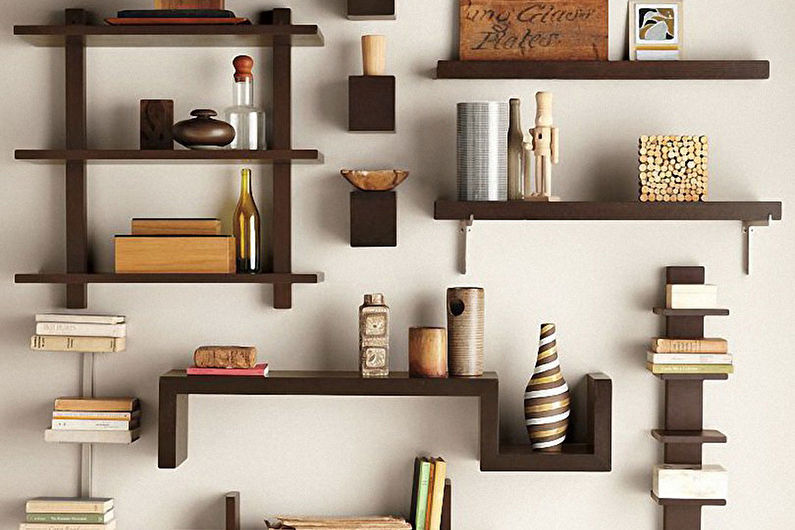
Corner wall shelves
People often overlook room corners due to their perceived impracticality, but using corner shelves can utilize this space and transform the interior. You can mount these shelves on two neighboring walls, and they can make use of both inside and outside corners.
The design possibilities for corner wall shelves mainly hinge on materials and decor, but even in their basic form, they appear unusual. People frequently use such shelves for books or bathroom essentials, as well as in storage rooms.
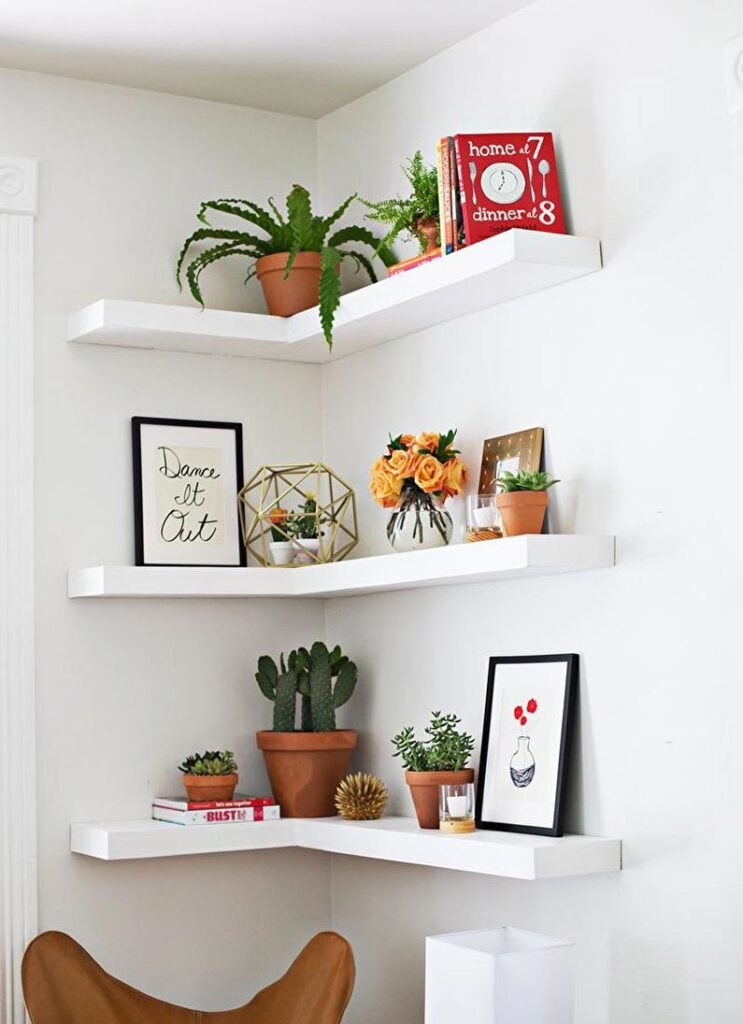
Suspended wall shelves
As their name suggests, people do not directly attach these shelves to the wall. Instead, they suspend them from ropes connected to the ceiling or a beam. Because this design lacks stability, it’s more suitable for storing books rather than fragile items like crystal vases. However, it’s perfect for creating unique accents in a room.
You can install one or several shelves. People often design the first option as a triangle or fit the shelf into a circle. The key point is to ensure the reliability of the storage.
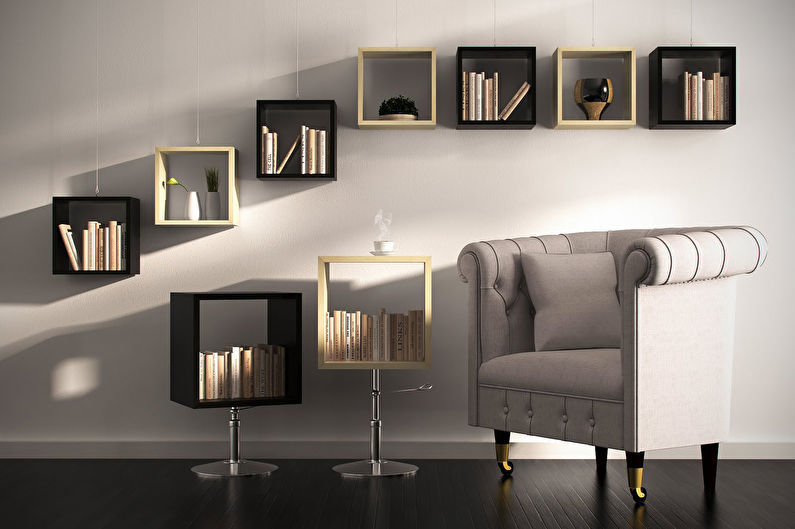
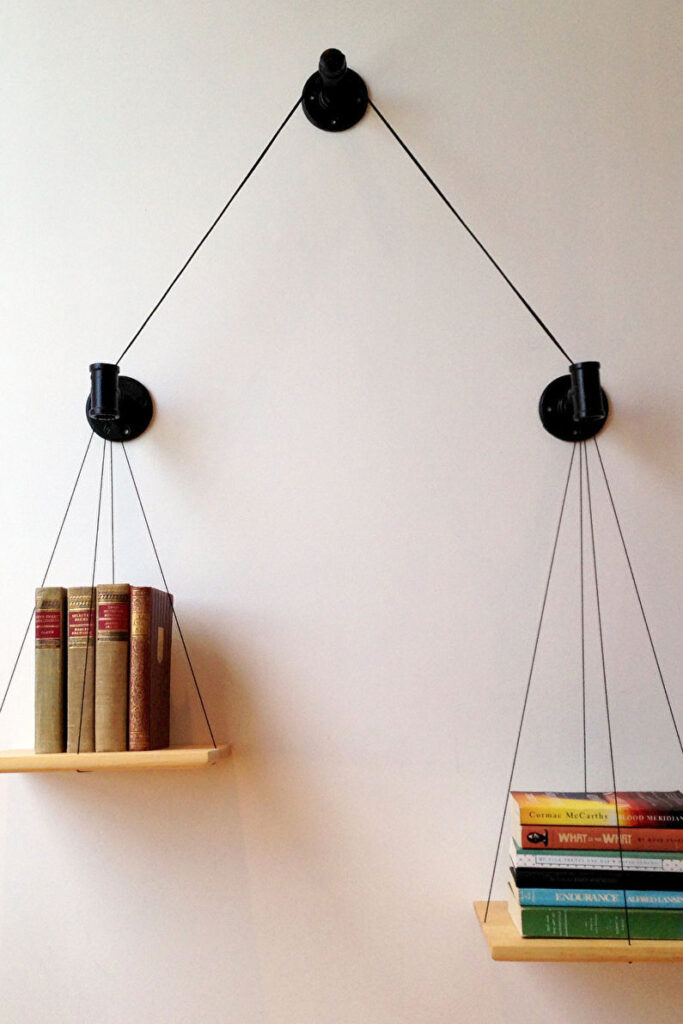
Materials for wall shelves
A wooden board nailed to the wall is the simplest shelf option that comes to mind. But for modern design, this may not be enough. The choice of material, even for such a simple item, is quite wide – as are their possibilities.
Wood and derivatives
Even if it is an obvious base, it should not be immediately discarded. Complex shapes and mounting can diversify a wooden wall shelf. This solution will be very appropriate for minimalism or loft. And if you want to fit the element into a classic interior, it is recommended to pre-treat the details, and maybe even decorate them with carving.
To save on material, you can use MDF, particleboard, or plywood – it’s beautiful, simple, and practical.

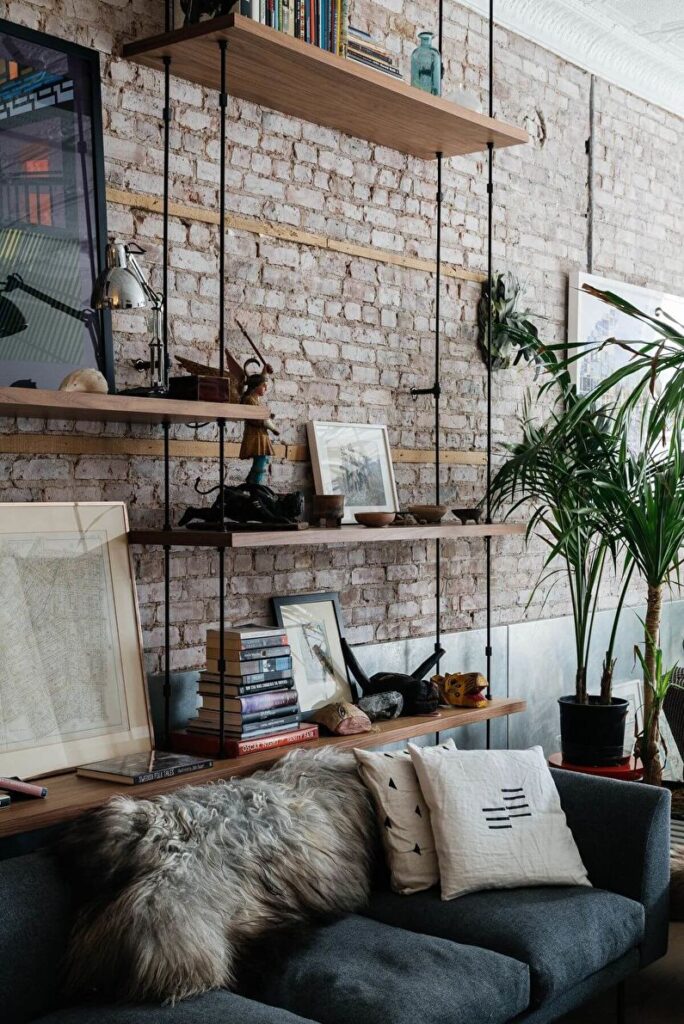
Metal
Metal wall shelves will definitely attract attention and fit harmoniously into the interior, especially if it’s high-tech, fusion, or minimalism. However, special skills will be required for their installation.
Such a base has high characteristics – durability, reliability, strength. And pre-treatment will protect it from corrosion.
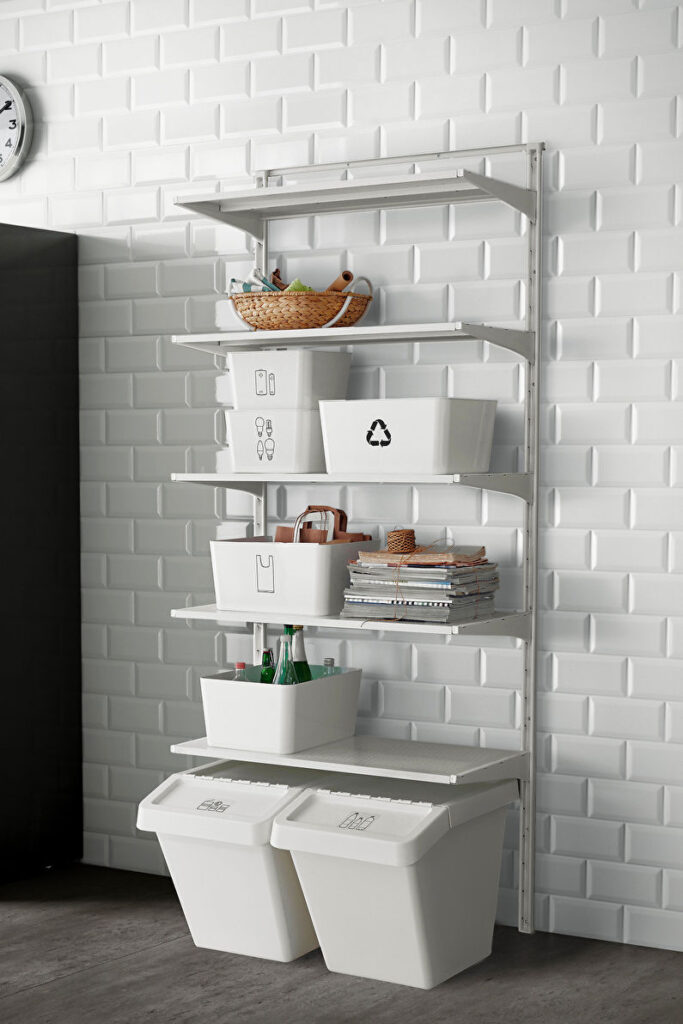
Plastic
A cheap, flexible, and versatile material that can look simple or luxurious, imitating natural options but eliminating their disadvantages. Especially if such a shelf on the wall will be filled with items, so that guests will not have the opportunity to take a closer look at its details. It’s a great solution for the bathroom!
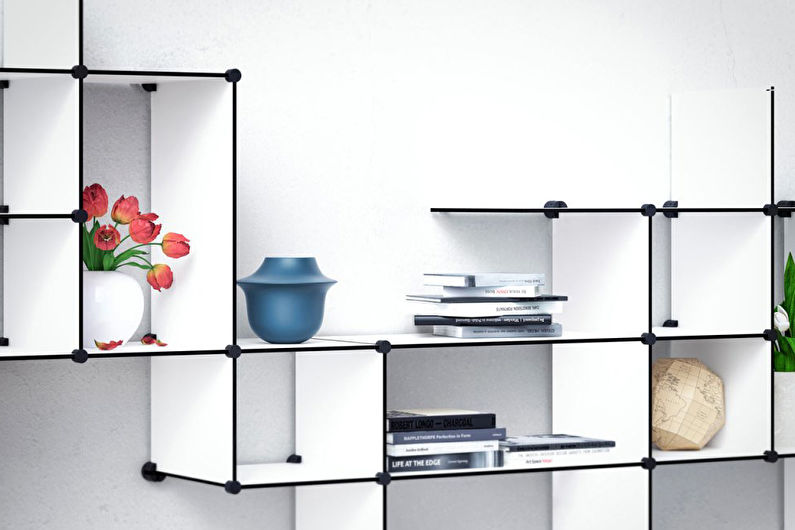
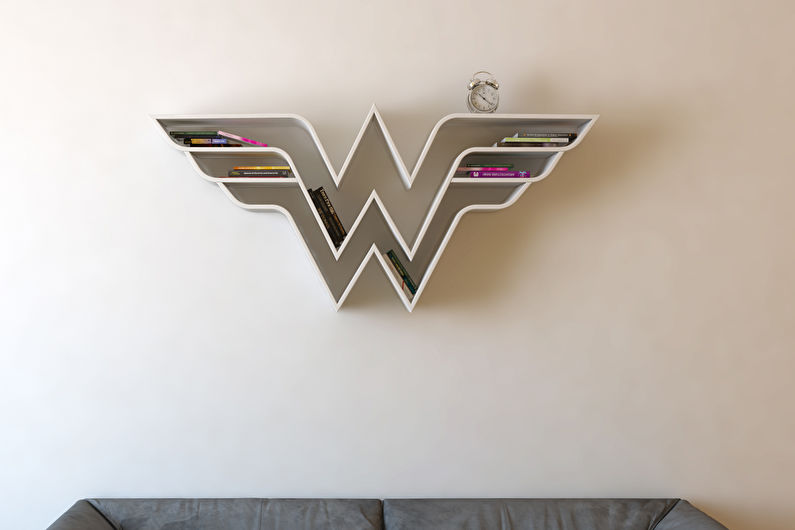
Glass or Mirror
Such a base has a significant drawback – fragility. A sudden push or impact can damage the shelf, but such a situation will not arise when storing lightweight items. It goes without saying how elegant glass looks, and how glamorous a mirrored surface looks? This will give the interior a feeling of weightlessness.
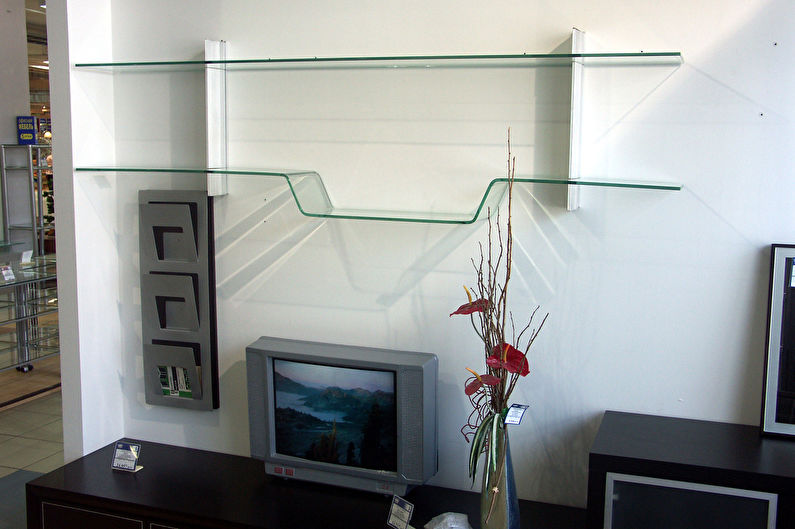
What are the types of shelf mountings?
You will have to choose the method of mounting the shelf to the wall – from three options. The reliability and mobility of the structure depend on your decision.
Wall shelves with fixation
Installation is done with dowels or anchors to the wall. This provides a strong fixation of the entire product, increasing its load capacity and strength. If the shelves are intended for storing heavy items, then this type of mounting is perfect. But there is a big downside – it is very difficult to dismantle it without consequences for the wall or structure.

Removable wall shelves
Moderately rigid mounting with brackets and mounting hooks that can be easily done at home, unlike the first type. If necessary, they can be dismantled without damaging the shelf, after which a new one can be installed.
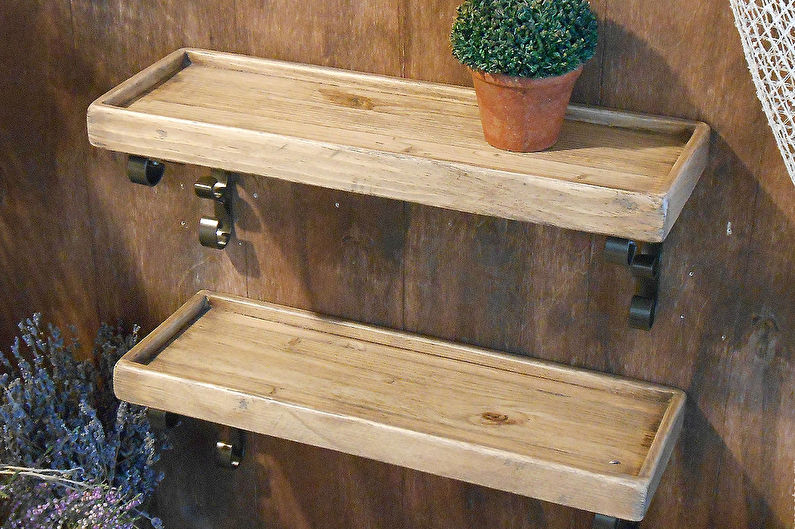
Modular wall shelves
Fully in line with modern trends of functionality and mobility, these wall shelves are installed by the principle of increment: lower tiers become the support for the upper ones. Various combinations of shades or forms that complement each other look appropriate.
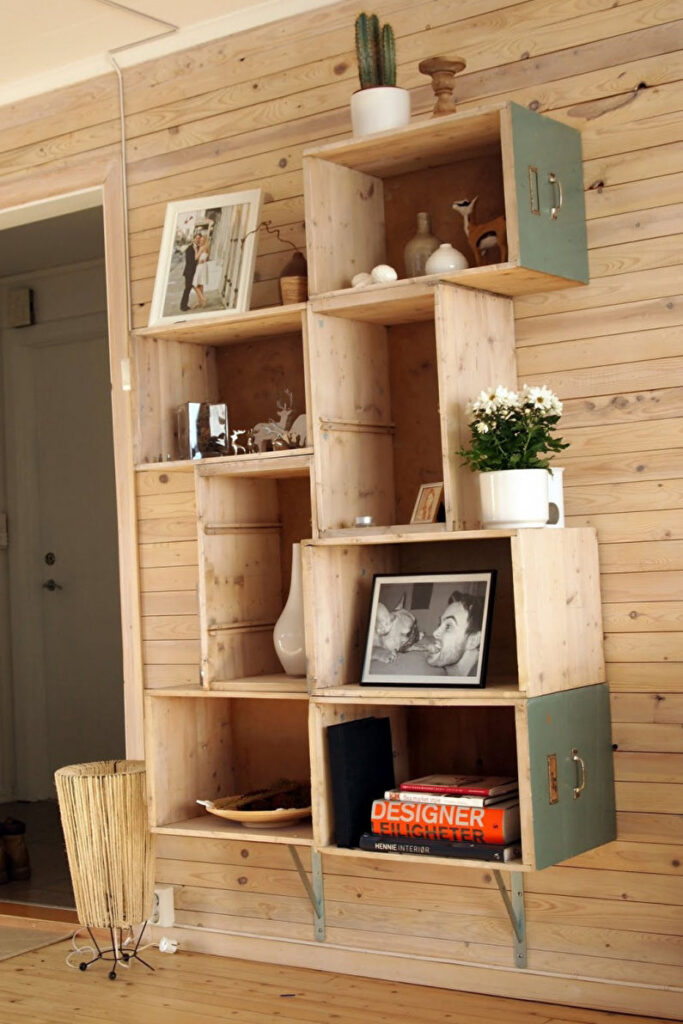
Choosing shelves to match the interior style
With quality work, shelves can become full-fledged furniture that, like any other item, needs to be harmoniously integrated into the room’s style.
Modern style
Here everything is simple and at the same time diverse: both laconic products made from different materials and whole ensembles of various geometric shapes will be suitable. Instead of empty decoration, there is conceptual aesthetics. Modular or mobile types of wall shelves are a priority.
It is necessary to orient yourself to the wall finish: in the case of a neutral coating, bright structures can be incorporated, while in a room with bold wall finishes, it is better to avoid shelves.
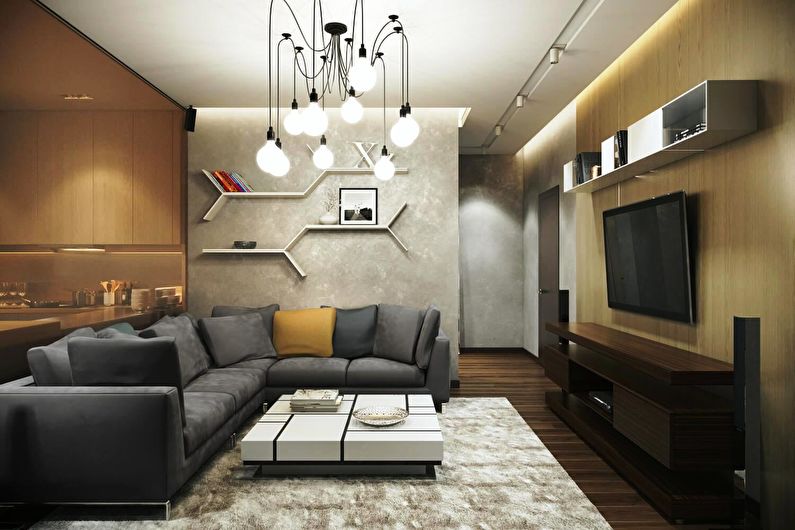
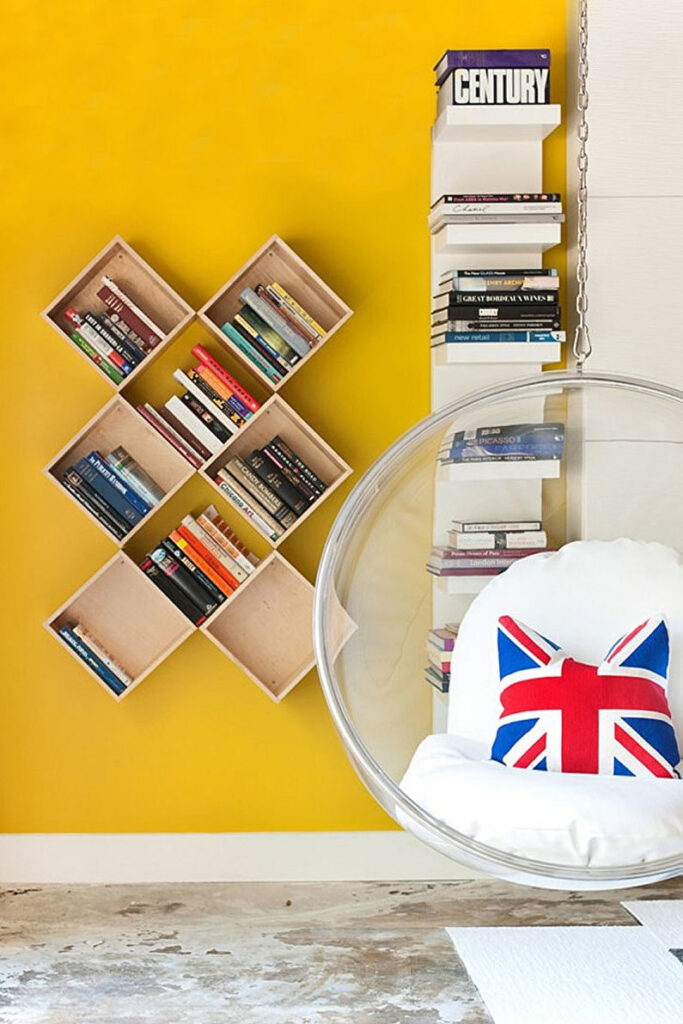
Classic style
It is not easy to incorporate wall shelves in a classic style. Wooden shelves on a flat wall, or at best – corner shelves, would be suitable. Brackets can be brought to the fore if they are used and match the design.
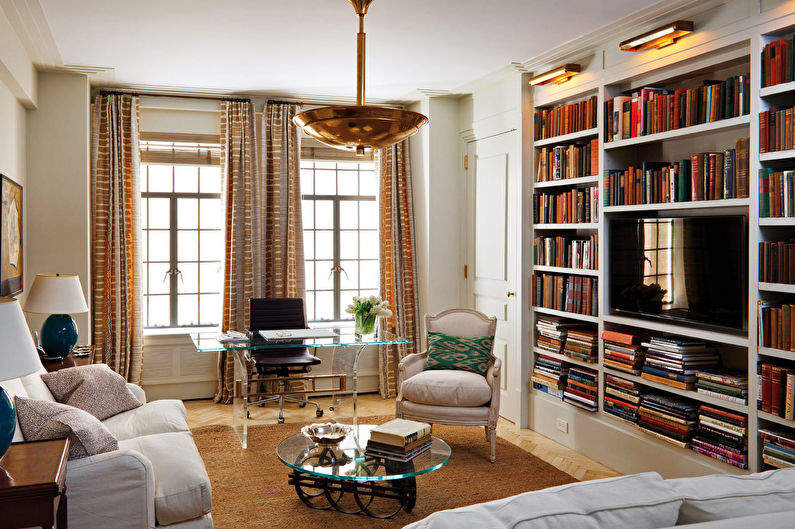

Provence style
Similar requirements are also imposed on the Provence style. However, the base needs to be treated more carefully. First, use wood or its derivatives. Secondly, cover them with white paint and, if possible, create an effect of antique furniture. Some carelessness in installation will add charm to the structure, but one should not forget about its strength.

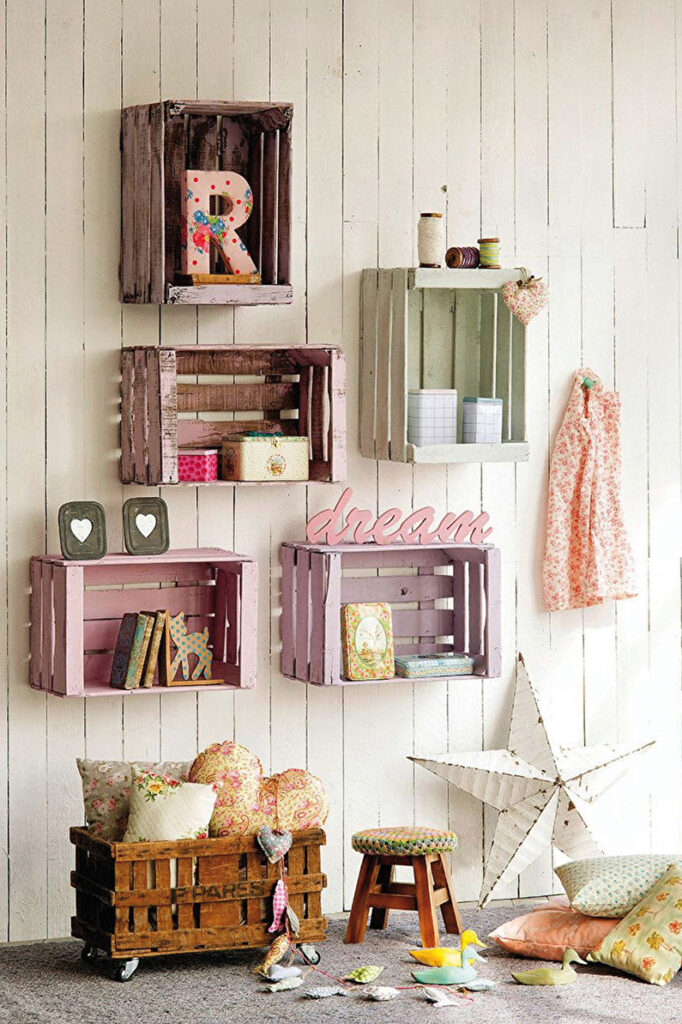
Minimalism
To accommodate many items, it is recommended to provide shelves with doors, thus hiding the dissonance from view. Glass or wooden surfaces look good – flat, smooth, and strictly horizontal.

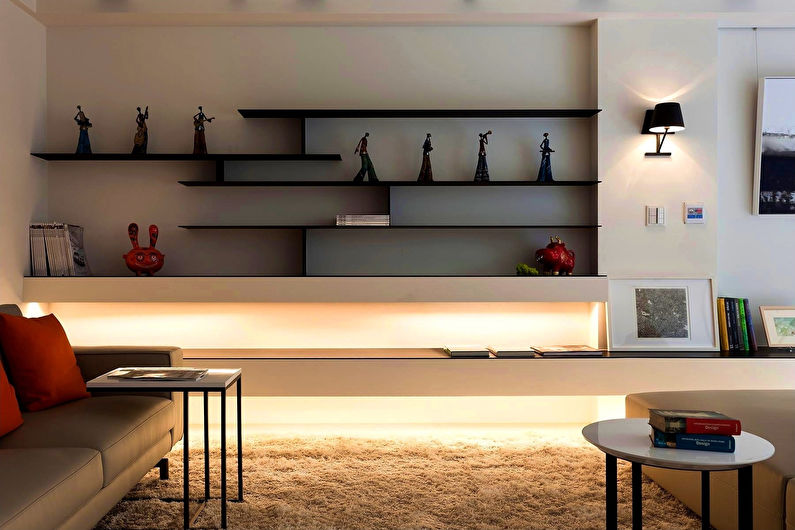
Loft
The most diverse options are offered by the free-spirited loft style. At the same time, it is not necessary to fanatically sand the boards to perfection – light carelessness blends perfectly with the brick walls characteristic of this style.
An excellent option is shelves suspended on a thick rope or a corner structure based on a prominent pipe. In general, loft allows turning space’s shortcomings into advantages, and technical elements – into decorative and aesthetic ones.
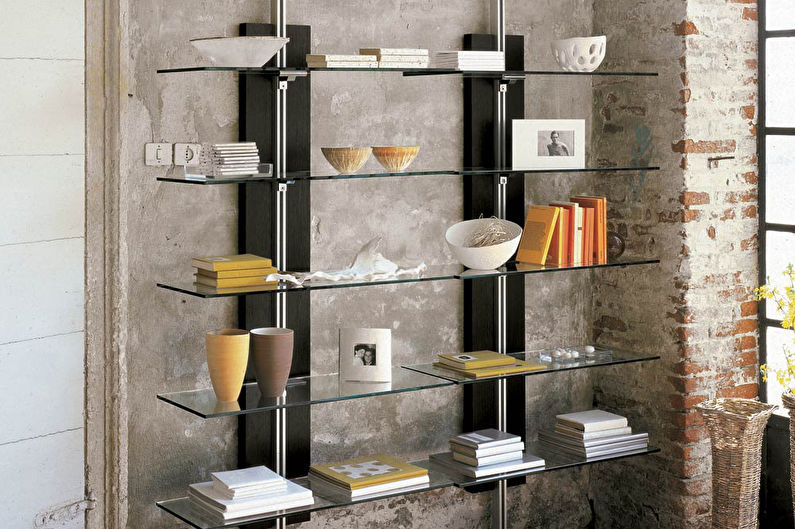

Shelf Decor
In addition to choosing shelves with interesting designs, they can also be further decorated for greater effect. To avoid the cluttered effect, make sure that the practical filling of the products does not conflict with the details.
The simplest option that is suitable for standard wooden shelves is surface decoration. Here you can use all available tools: stencils, decoupage, decorative tape, and so on. Such a solution will look good on neutral walls, for example, painted in white.
For the Provence style interior, the use of textile elements is characteristic, so why not decorate shelves with them, laying out several beautifully hanging scarves with patterns? Cozy and practical.
Romantic mood can be created with candles, placed individually or in groups. However, lighting sources can be experimented with, incorporating some modern trends. For example, wall shelves with lighting – mounted lamps that gently illuminate the details on them – look unusual.
Pipe fasteners on shelves can be used as a peculiar “hanger”: for example, for a lamp, towels, or a garland. With a little effort, a simple storage space turns into an elegant interior element.
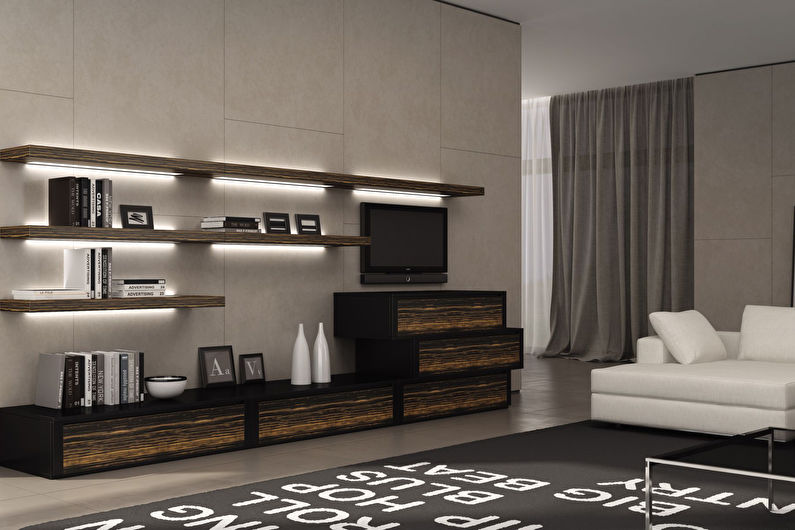
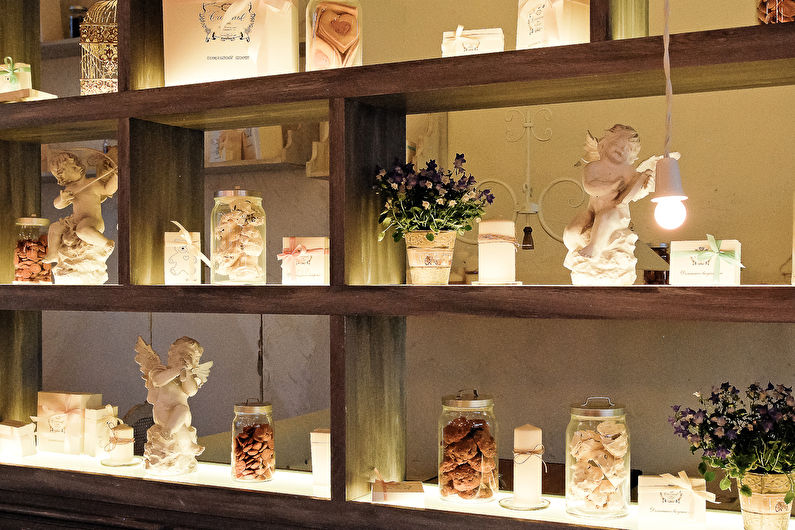
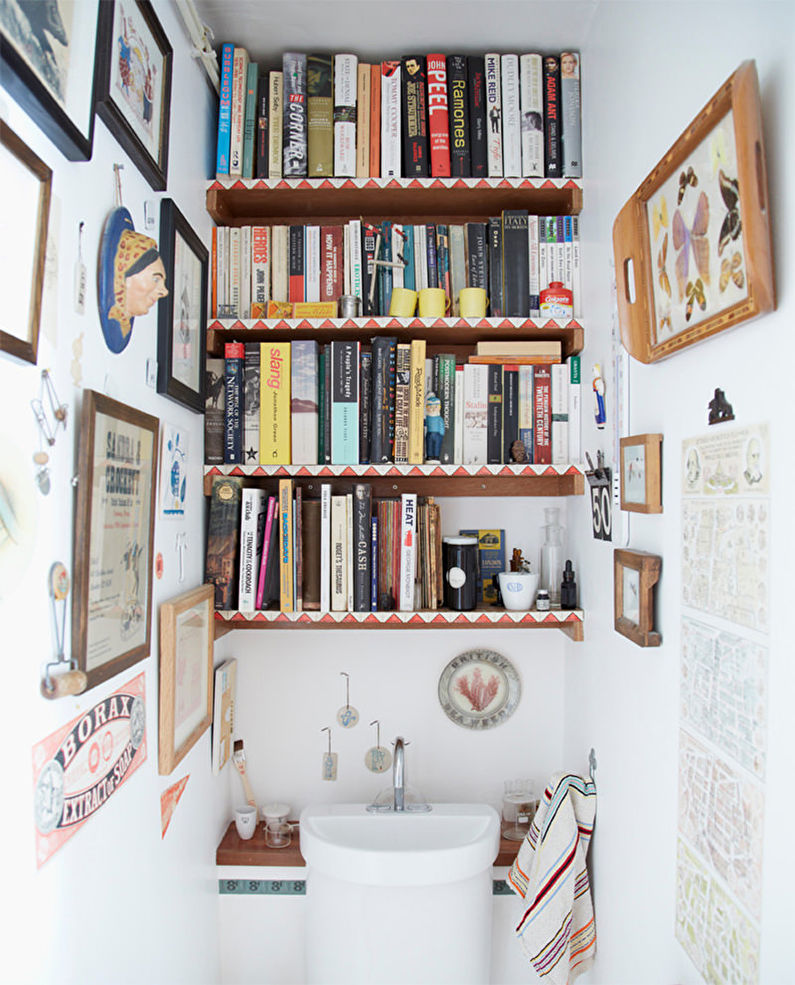
DIY Wall Shelf
It seems like such a simple piece, but there are so many options! However, not all of them are easy to make on your own and, let’s admit it, certain skills are required even for a simple design. Before starting the process of making a shelf with your own hands, familiarize yourself with the basic recommendations that will help both beginners in furniture making and experienced craftsmen.
First, carefully plan the design and create a sketch before starting the main process. Establish the purpose of the shelf, the items it will hold, its location, shape, and size.
Next, assess the weight capacity, and select the material and mounting method. Then, mark the base’s surface and cut the material.
Assemble the modules, take a second measurement, and compare it with the marking for the attachment. After that, finish the elements by sanding, tightening, and painting, if needed.
Install the fasteners on the wall surface and the shelf, then attach the parts and adjust to the level with the final fastening.
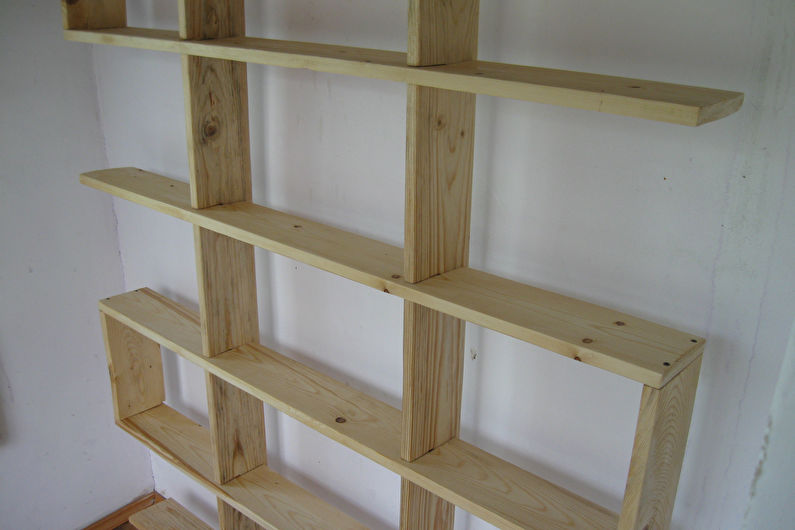
Wall shelves – photos
In addition to the options listed, we present you with 30 more photos with ideas for wall shelves that will help you find an interesting solution. Get inspired by beautiful interiors!
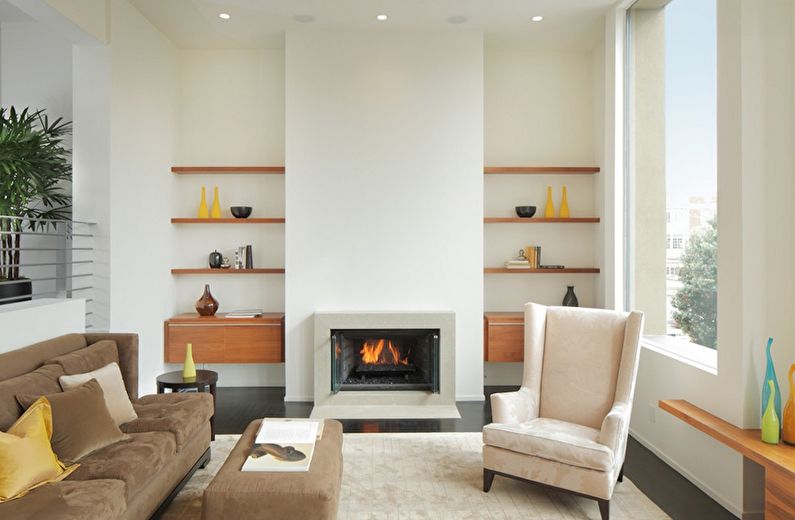
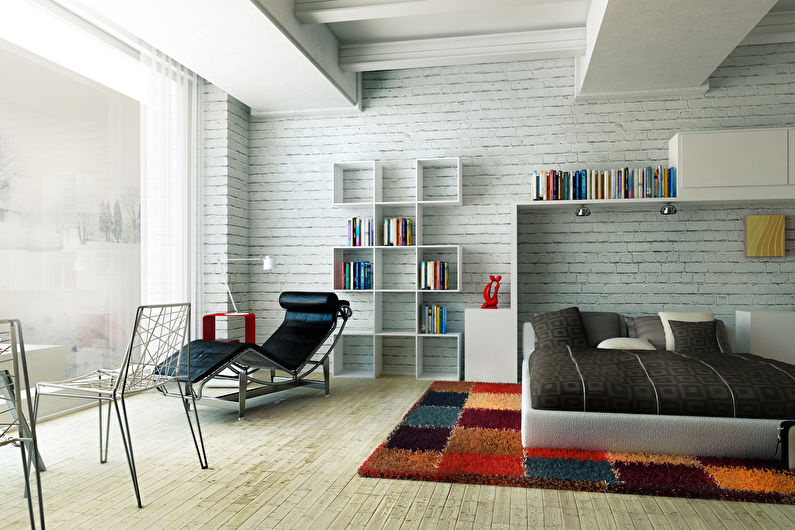
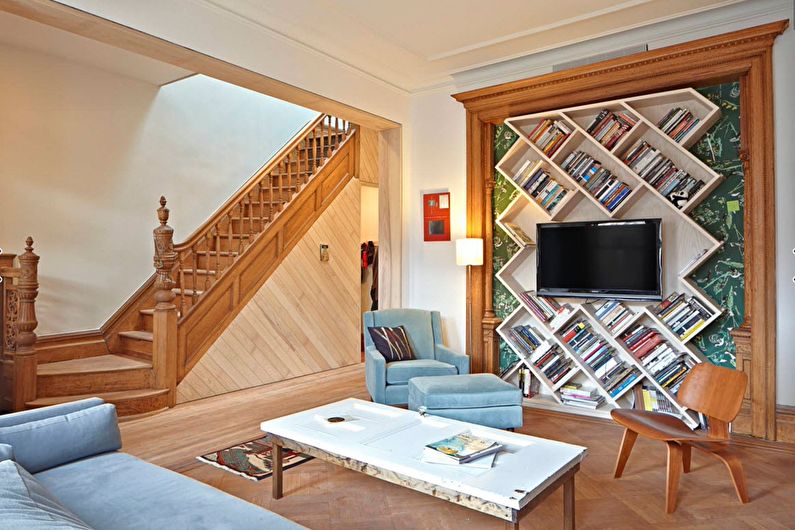
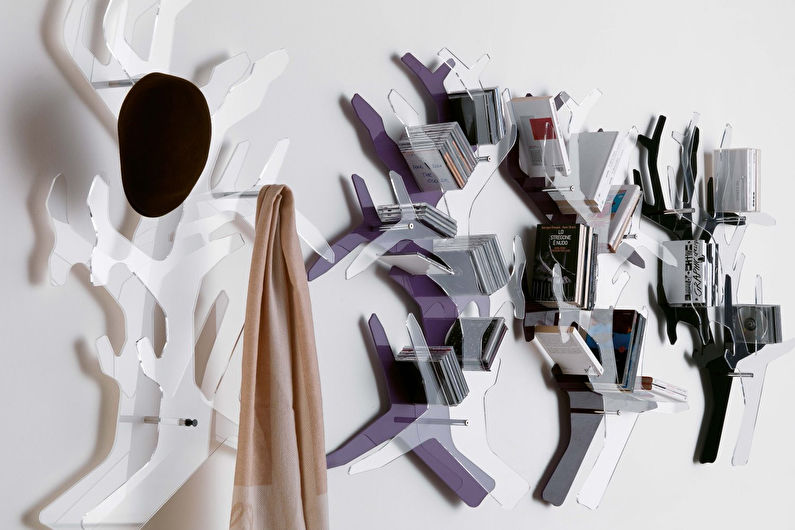
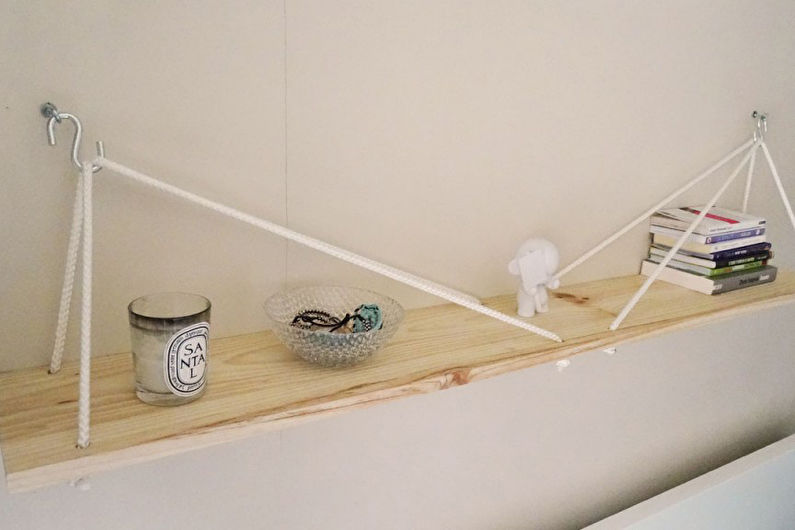
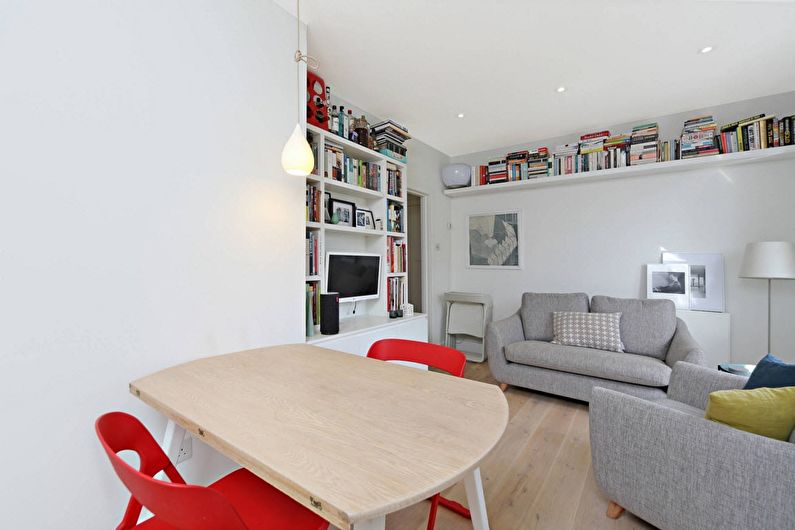
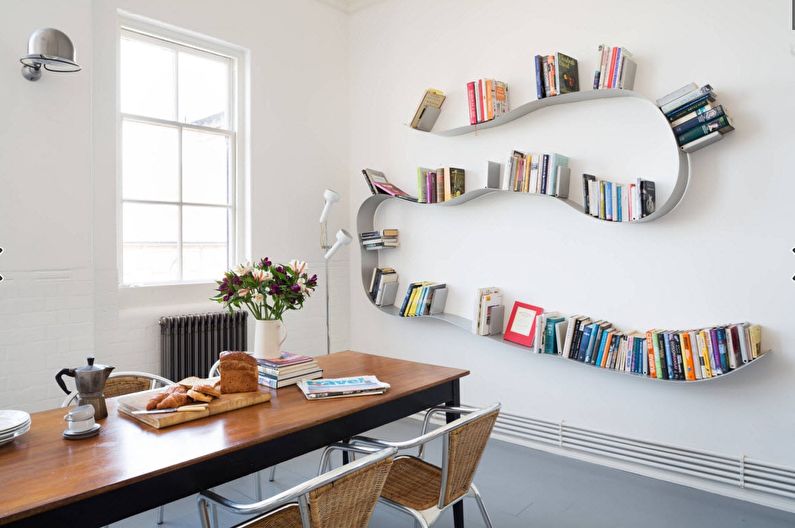

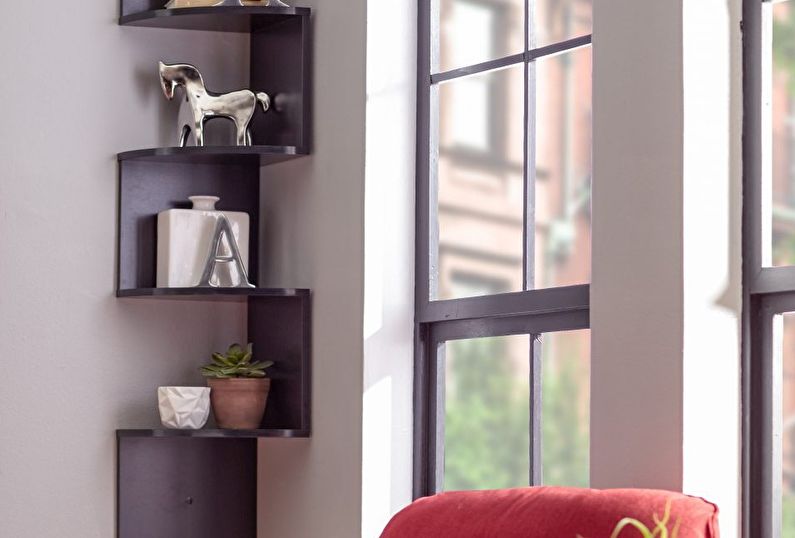

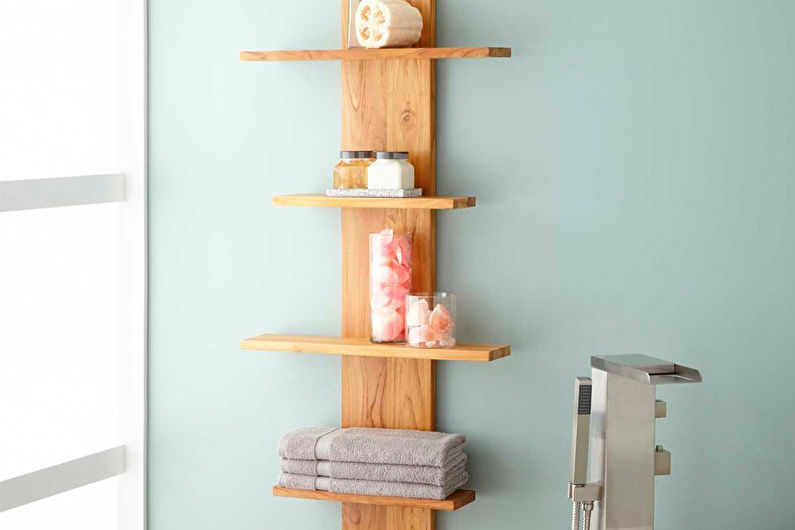
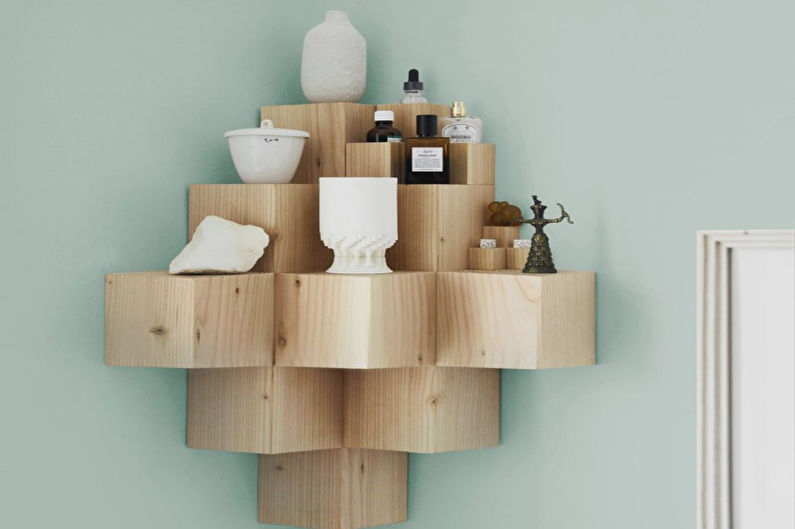
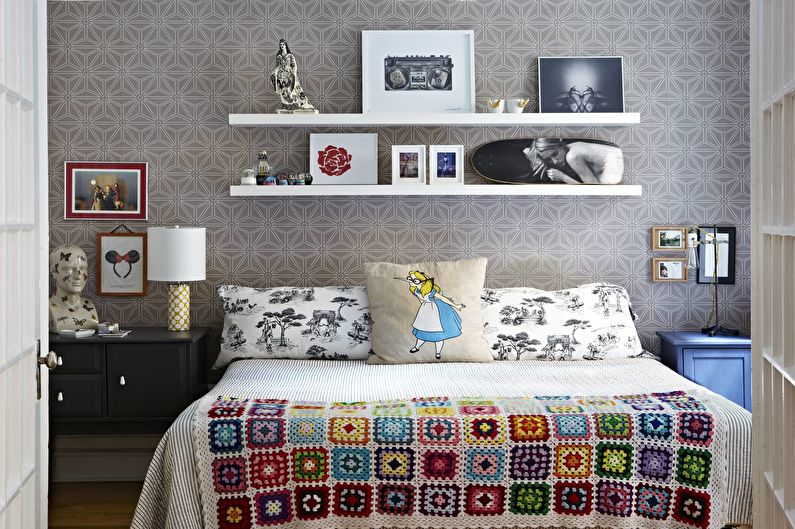
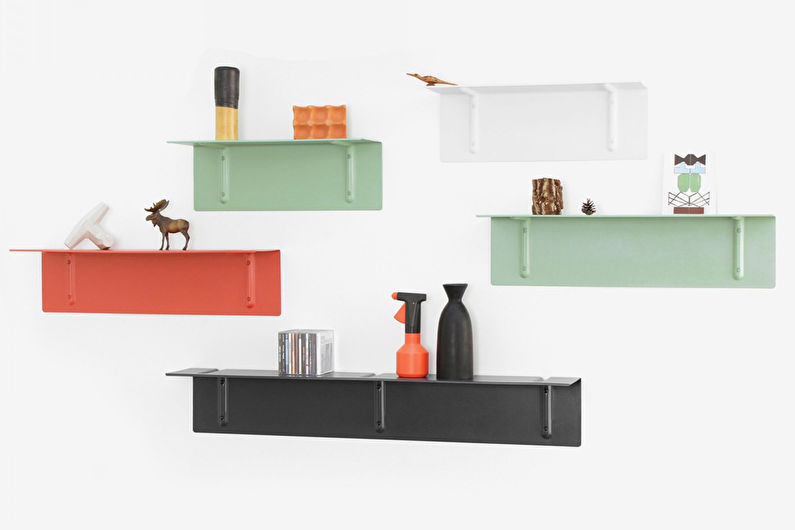
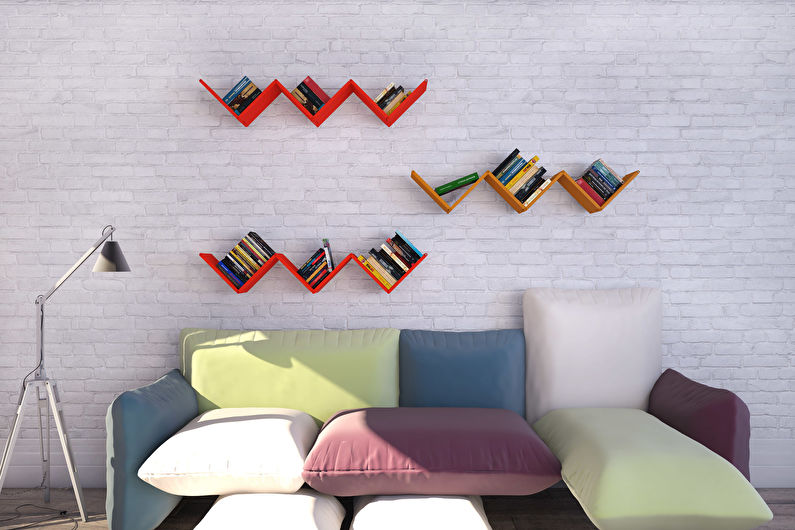

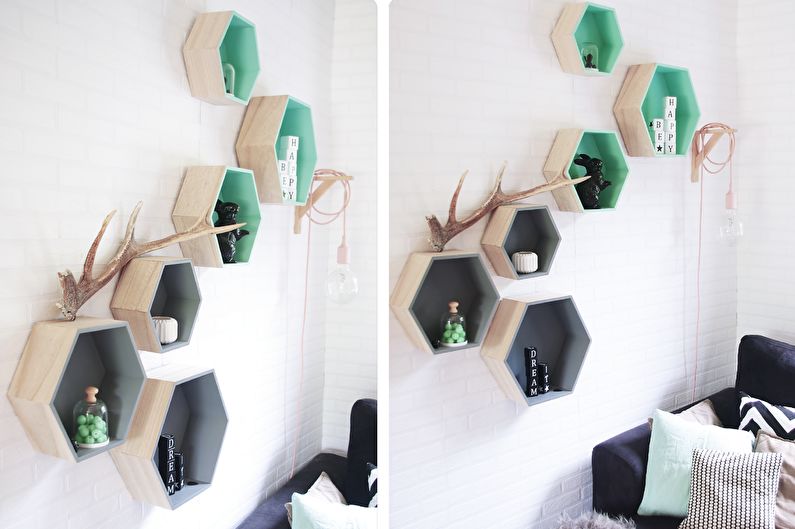
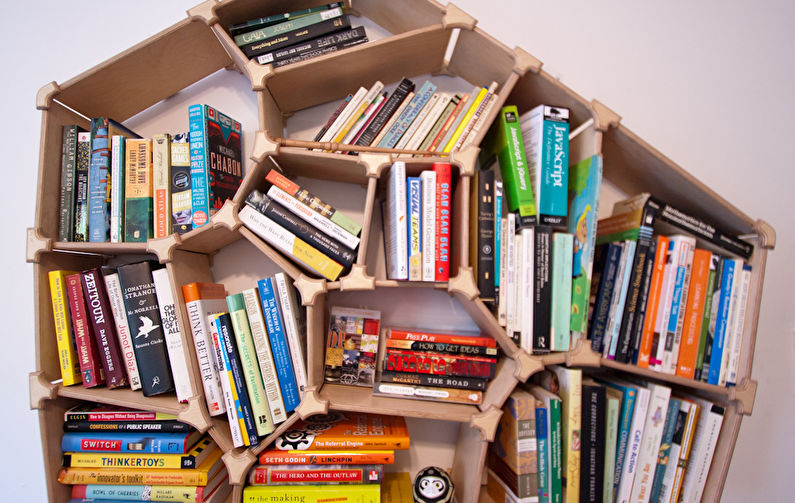
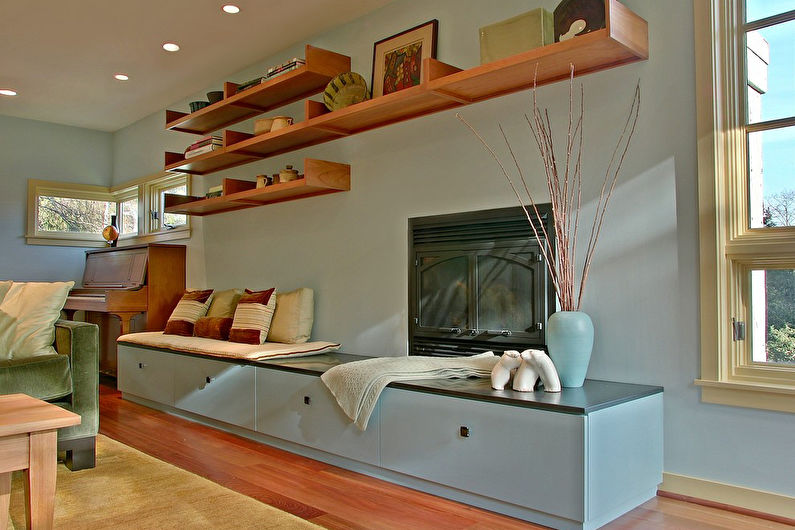
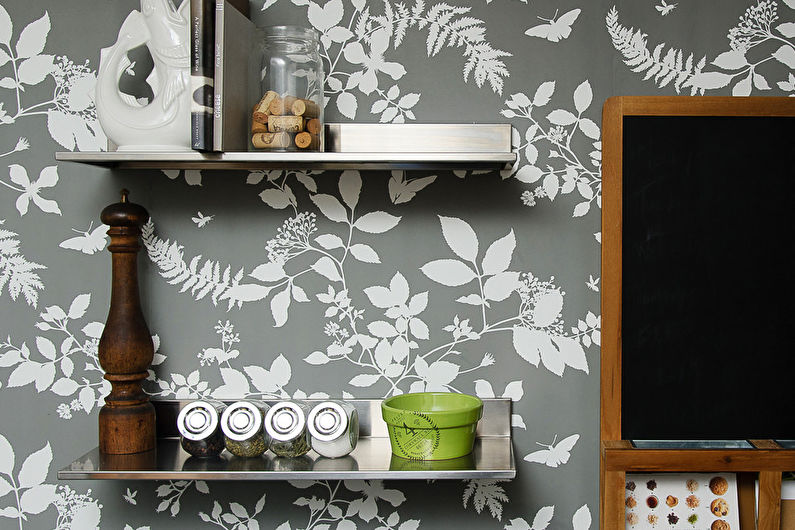
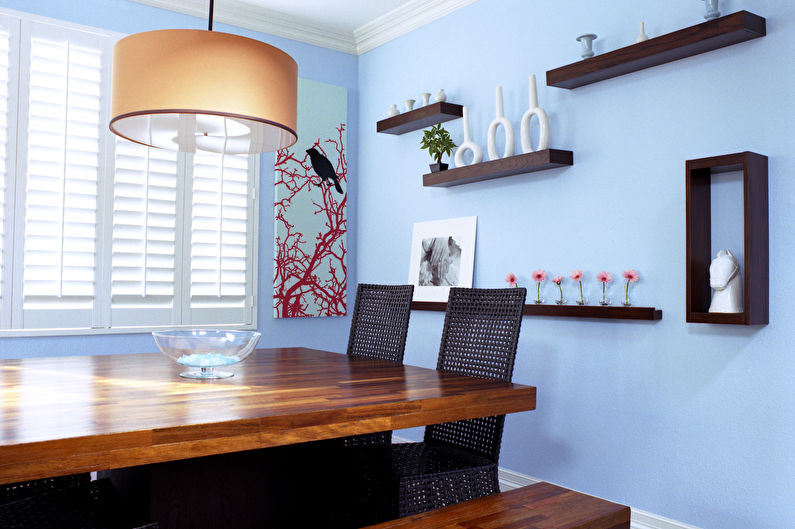
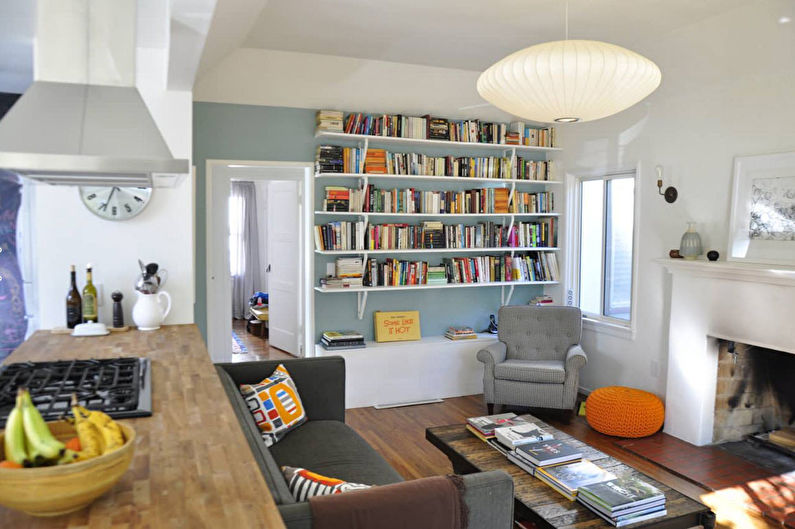
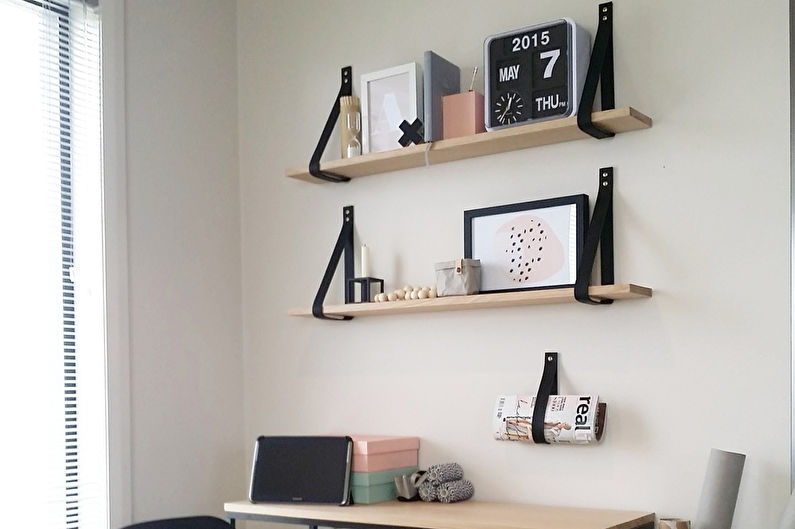
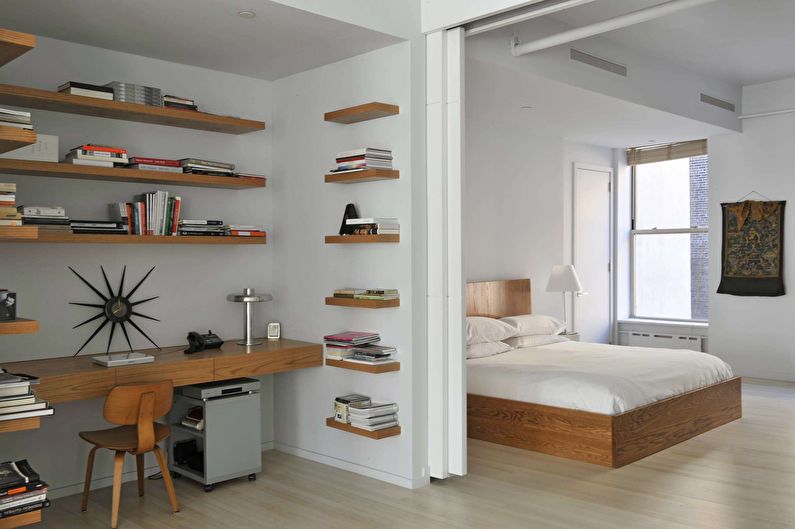
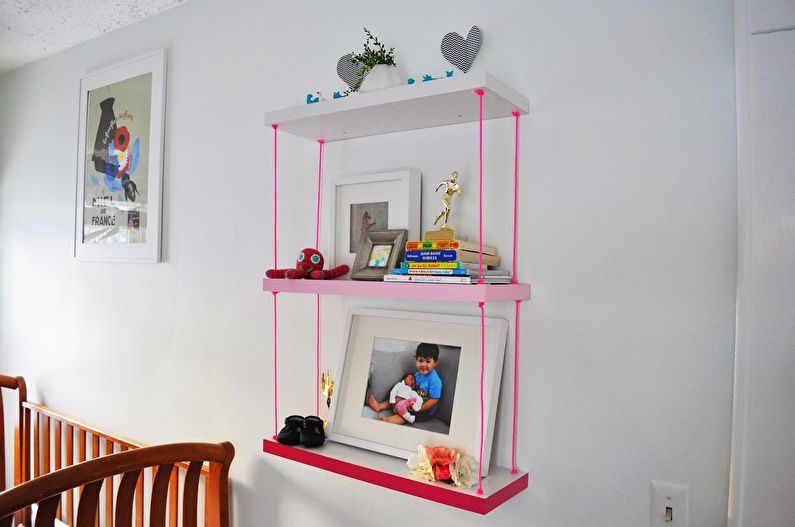
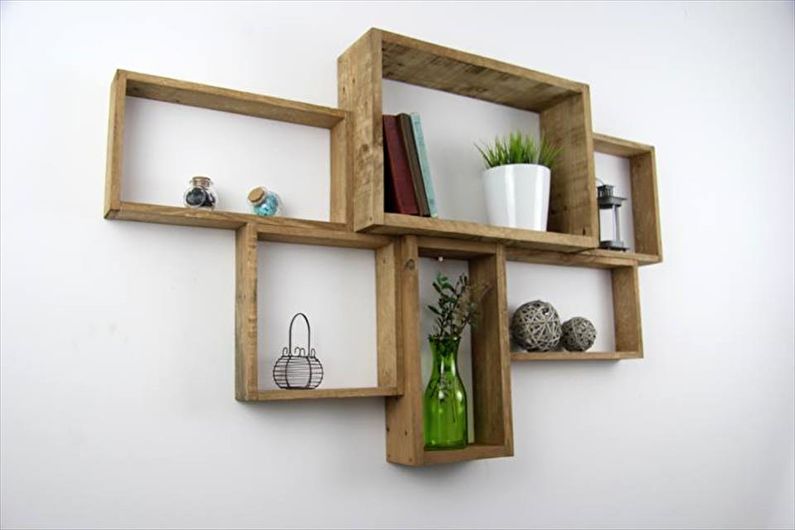
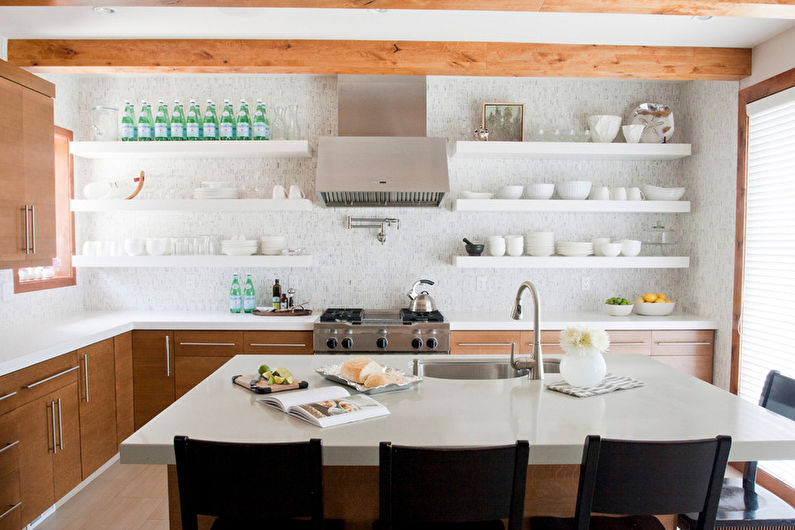

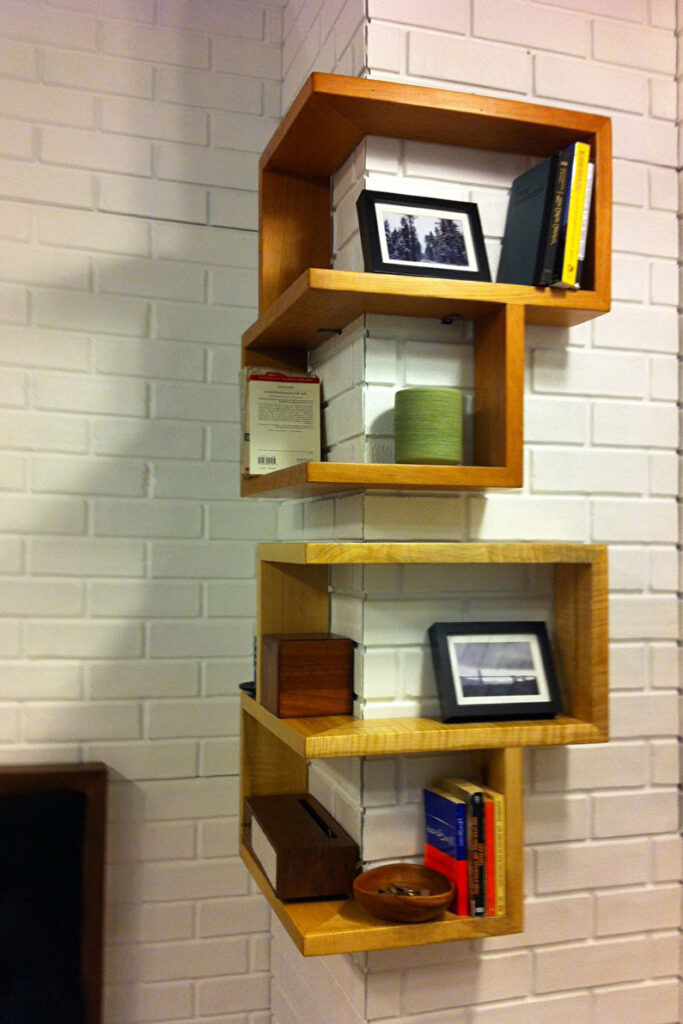
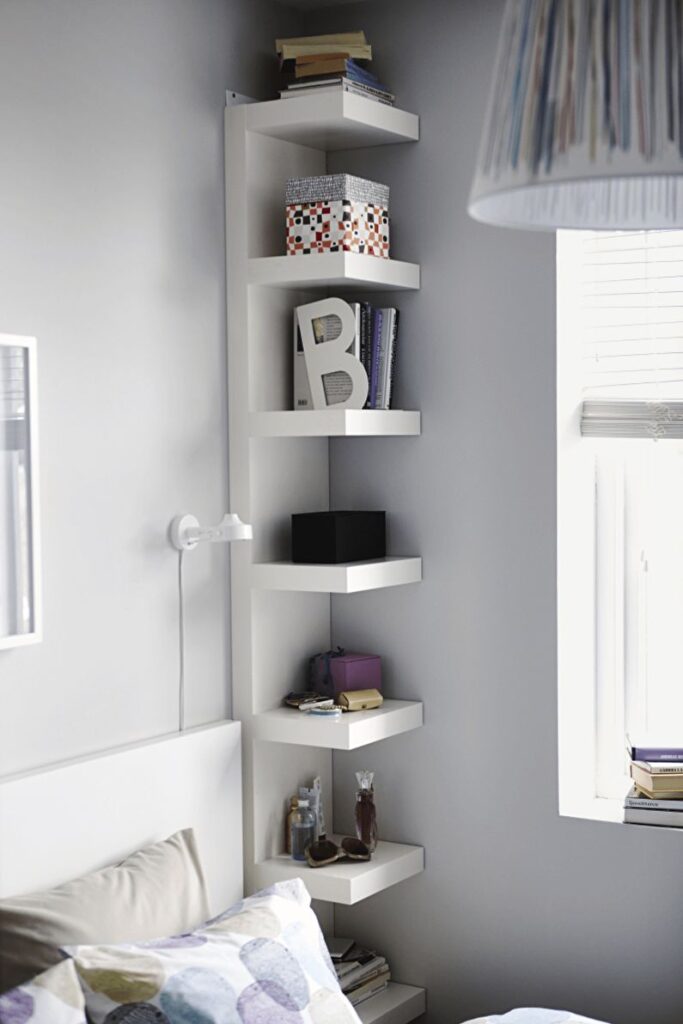

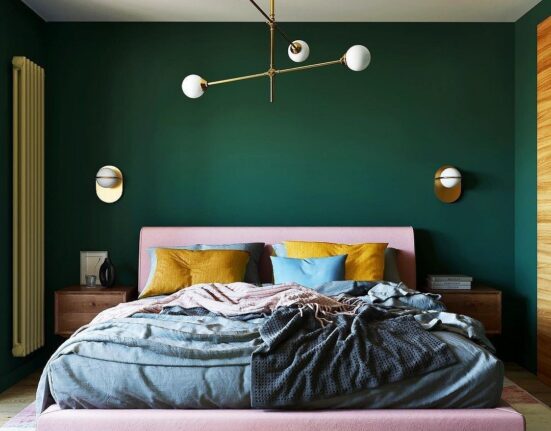

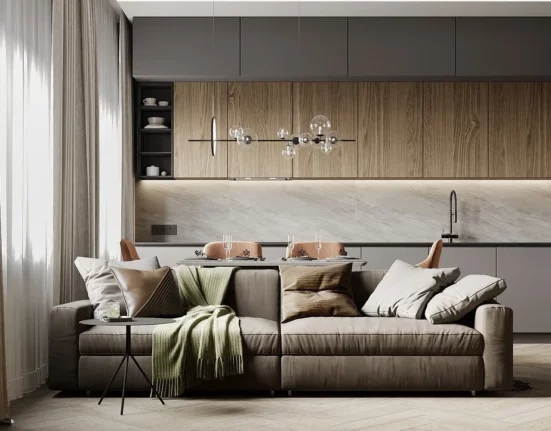
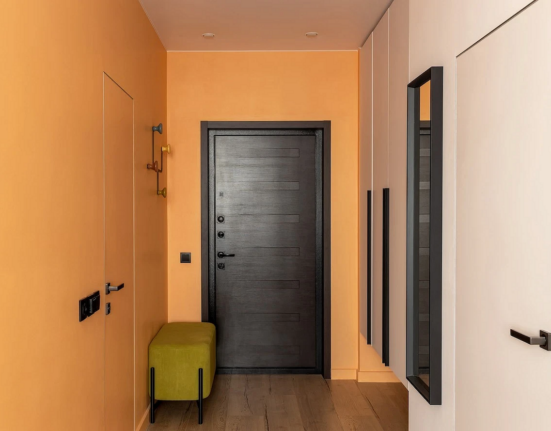

Leave feedback about this